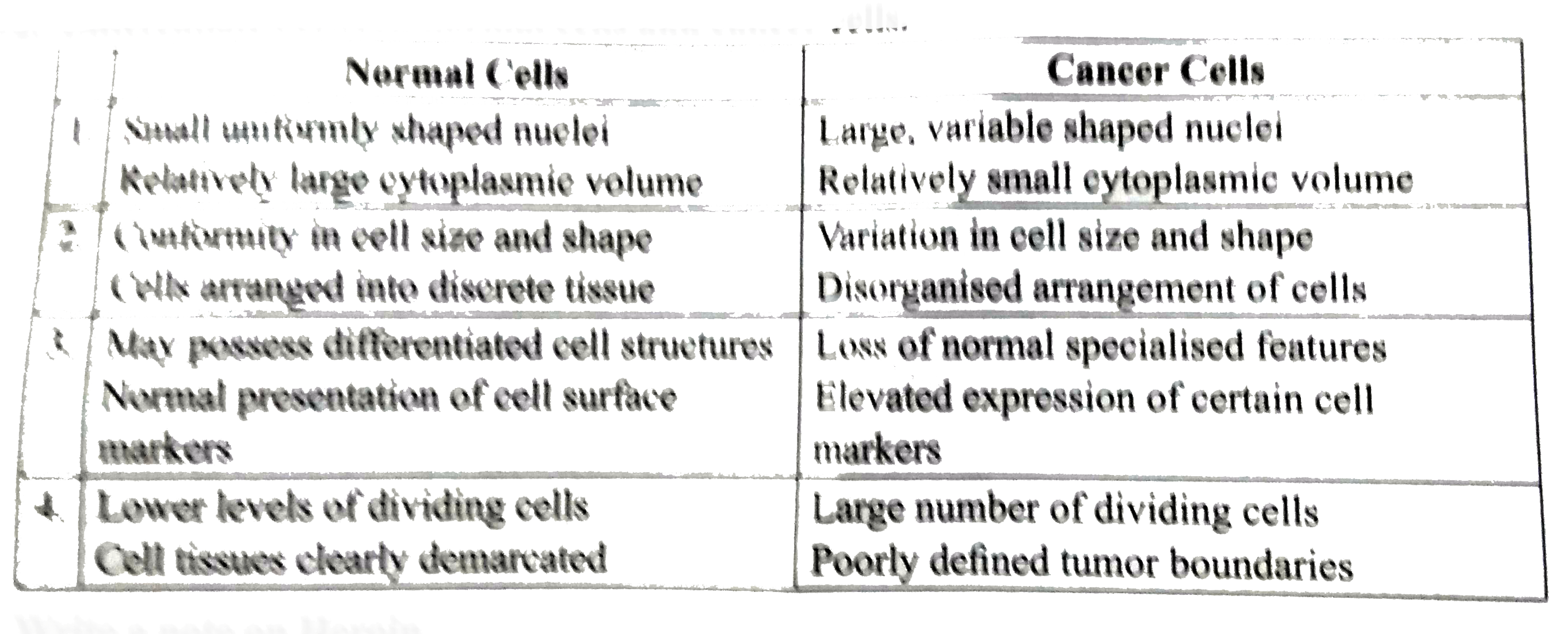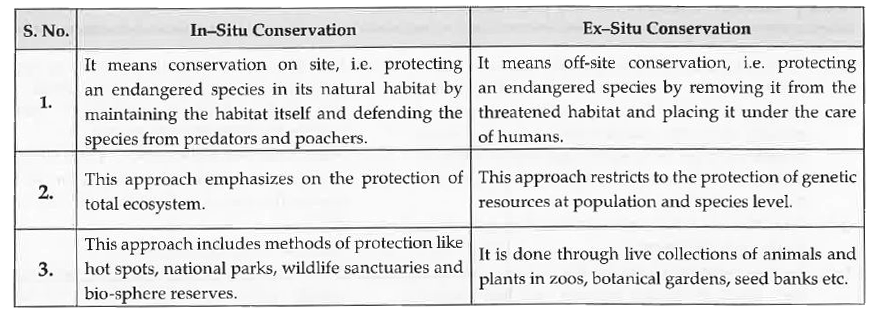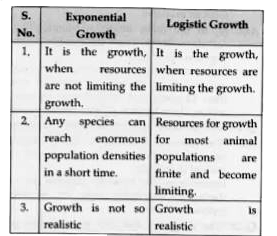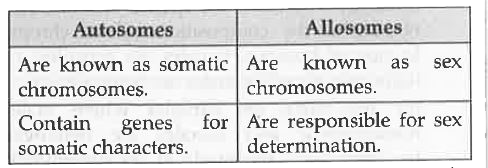InterviewSolution
Saved Bookmarks
This section includes InterviewSolutions, each offering curated multiple-choice questions to sharpen your knowledge and support exam preparation. Choose a topic below to get started.
| 17851. |
Question : Define out crossing. Give example. |
Answer» SOLUTION :
|
|
| 17852. |
Question : Give the differences between normal cells and cancer cells. |
Answer» SOLUTION :
|
|
| 17853. |
Question : Differentiate between morula and blastula of mammals. |
| Answer» Solution :Morula is a 16–32-celled STRUCTURE of a DEVELOPING embryo, looks like a .LITTLE mulberry.. It consists of a centrally located inner cell mass and a surrounding layer of the outer cell mass, Blastula is a sphere of cells with a central cavity, the blastocoel. It is formed of outer nutritive layer, TROPHOBLAST and inner cell mass called embryonal knob. | |
| 17854. |
Question : Differentiate between monozygotic and Dizygotic twins. |
Answer» SOLUTION :
|
|
| 17855. |
Question : Differentiate between microsporogenesis and megasporogenesis. Which type of cell division occurs during these events? Name the structure formed at the end of these two events |
| Answer» SOLUTION :During these events MEIOSIS TYPE of division OCCURS. At the end of microsporogenesis microspores (pollen GRAINS) are produced while at the end of megasporogenesis megaspores are produced | |
| 17856. |
Question : Differentiate between microsporogenesis and megasporogenesis . Which type of cell division occurs during these events ? Name the structures formed at the end of these two events . |
| Answer» Solution :The development of microspore from the microspore mother cell is called MICROSPOROGENESIS . The development of megaspore from the megaspore mother cell is called megasporogenesis . In both these developments mother cell undergoes meiotic DIVISION or reduction division to produce spores . At the end of these DIVISIONS microspores are produced INSIDE the ovary . | |
| 17857. |
Question : Differentiate between microsporogenesis and megasporogenesis. |
Answer» SOLUTION :
|
|
| 17858. |
Question :Differentiate between menstrual cycle and estrous cycle. |
Answer» SOLUTION :
|
|
| 17859. |
Question : Differentiate between menarche and menopause |
| Answer» SOLUTION :BEGINNING of first menstrual cycle at PUBERTY in a girl is called menarche. The cessation of menstrual cycle in a WOMAN around 45–50 years of age is called menopause. | |
| 17860. |
Question : Differentiate between manures and biofertilisers. |
| Answer» SOLUTION :MANURES are PARTIALLY DECAYED organic wastes which are added to soil. Biofertilisers are the organisms which enrich the soil in nutrients due to their biological activity. | |
| 17861. |
Question : Differentiate between infectious and non-infections disease |
Answer» SOLUTION :
|
|
| 17862. |
Question : Differentiate between inbreeding and outbreeding |
Answer» SOLUTION :
|
|
| 17863. |
Question : Differentiate between Hydrarch and a X erarch succession. |
|
Answer» Solution :Hydrach Succession : Strats in WATER PROCEEDS from hydric (aquatic) to mesic (neuther dry nor wet) situations. Xerarch succession : Starts on BARREN roack proceeds from XERIC dry to mesic CONDITIONS. |
|
| 17864. |
Question : Differentiate between in - situ and ex-situ approaches of conservingbiodiversity. |
Answer» SOLUTION :
|
|
| 17865. |
Question : Differentiate between Hypocotyl and Epicotyl |
Answer» SOLUTION :
|
|
| 17866. |
Question : Differentiate between homologous and analogous organs by giving plant example. |
|
Answer» Solution :Homologous organs are those whose STRUCTURE and origin is same but functionally they differ. They exhibit divergent evolution. e.gu, In PLANTS the thorns of bougainvillea and tendrils of cucurbita exhibit homology. Analogous organs are those whose structure and origin is not similar but functionally, they are same. They exhibit convergent evolution. e.g., peepal plant LEAVES and Opunitia STEM, both of them performing PHOTOSYNTHESIS but are different in origin. |
|
| 17867. |
Question : Differentiate between Gene augmentation therapy and gene inhibition therapy. |
| Answer» SOLUTION :Gene augmentation therapy which involves insertion of DNA into the genome to replace the missing gene product and Gene inhibition therapy which involves insertion of the ANTI sense gene which inhibits the EXPRESSION of the dominant gene. | |
| 17868. |
Question : Differentiate between Geitonogamy and Xenogamy. |
|
Answer» Solution :Geitonogamy : The transfer of POLLEN GRAINS from the ANTHER of one FLOWER to the stigma of another flower of the same PLANT. Xenogamy : The transfer of pollen grains from the anther of one flower to the stigma of another flower of different plants. |
|
| 17869. |
Question : Difference between flush end and cohesive end of DNA. |
| Answer» Solution :`{:("FLUSH END ","COHESIVE END"),("Some restrictionenzymes CUT the strands of DNA through the centre RESULTING in BLUNT end or flush end or symmetric cuts. ","Some restriction enzymes cut the strands in a way producing protruding and recessed ends known as cohesive or sticky end or asymmetric cuts."):}` | |
| 17870. |
Question : Differentiate between external fertilization and internal fertilization giving example. |
|
Answer» SOLUTION :External fertilization : The fusion of male and female gametes takes place outside the female body. The chances of fertilization is less. The organisms release more NUMBER of gametes into the external medium. The off springs are vulnerable to the predators. Ex : Bony fishes and AMPHIBIANS. INTERNAL fertilization : The fusion of male and female gametes inside the body of female organism is called internal fertilization. The chances of fertilization is more. Male organism produces more number of sperms and female produce lesser number of eggs. The offsprings are highly protected. Ex : In HIGHER forms like reptiles, birds, mammals. |
|
| 17871. |
Question : Differentiate between exonuclease and endonuclease. |
Answer» SOLUTION :
|
|
| 17872. |
Question : Differentiate between exponential growth and logistic growth. |
Answer» SOLUTION :
|
|
| 17873. |
Question : Differentiate between Exons and Introns. |
|
Answer» Solution :Exons : (a) They are the coding sequence of DNA/RNA TRANSCRIPT that FORM PARTS of mRNA and code for DIFFERENT regions of the polypeptide. (b) They are joined together during splicing to make the information continuous . INTRONS : (a) Introns are non-coding sequences of DNA/RNA transcript that do not become part of mRNA. (b) They are removed during splicing |
|
| 17874. |
Question : Differentiate between Exine and Intine of pollen grain. |
Answer» SOLUTION :
|
|
| 17875. |
Question : Differentiate between Eurytherms and Stenotherms. |
Answer» SOLUTION :
|
|
| 17876. |
Question : Differentiate between divergent evolution and convergent evolution with one example for each. |
Answer» SOLUTION :
|
|
| 17877. |
Question :Differentiate between diagnostics and therapeutics. Give one example for each category. |
| Answer» Solution :(a) DIAGNOSTICS are techniques employed for the diagnosis of different diseases. THERAPEUTICS are methods for treating or CURING diseases. (b) Diagnostics provide correct basis for TREATMENT, e.g., ELISA technique helps in the diagnosis of HIV. Therapeutics provide cure from the disease such as antibiotic helps curing MICROBIAL infection. | |
| 17878. |
Question : Differentiate between diagnostics and therapeutics. Give one example for each category. |
|
Answer» Solution :A diagnostic TECHNIQUE helps US to find the CAUSE and nature of a disease. Example : ELISA is a test for HIV. A therapeutic agent on the other HAND helps in the treatment of a disease. Example: Antibiotics for bacterial infections. |
|
| 17879. |
Question : Differentiate between continuous and discontinuous synthesis of DNA. |
|
Answer» Solution :Continuous synthesis: (a) ONE stand of DNA is synthesised as a continuous stretch in the 5' to 3' DIRECTION (b) The template strand of DNA strand is with 3’to5’ Polarity. (c) No need of ENZYME ligase (for joining). (d) There is no need for primers. Discontinuous synthesis: (a) Short stretches are synthésised in the 5'to3' direction from replication fork, (b) The DNA strand with 5'to 3' polarity is the template Strand for this. (c) DNA ligase enzyme is required for joining short stretches. (d) There is need for primers. |
|
| 17880. |
Question : Differentiate between connecting link and missing link. |
| Answer» Solution :LIVING organisms that possess characters of TWO different groups of living organisms are CALLED connecting links, e.g., Peripatus. On the other HAND, the FOSSIL organisms that had characters of two different groups of living organisms are called missing links, e.g., Archaeopteryx. | |
| 17881. |
Question : Differentiate between Coleoptile and Coleorrhiza |
Answer» SOLUTION :
|
|
| 17882. |
Question : Differentiate between coitus interruptus and lactational amenorrhea. |
|
Answer» SOLUTION :Coitus interruptus : In this the male partner withdraws his penis just before ejaculation. Lactational amenorrhea : During intense lactation following delivery, menstrual cycle does not OCCUR. Therefore as long as the MOTHER breast feeds the child, the chance of conception is almost nil. This is to be EFFECTIVE only upto six MONTHS following delivery. |
|
| 17883. |
Question : Differentiate between chasmogamy and cleistogamy. |
Answer» SOLUTION :
|
|
| 17884. |
Question : Differentiate between blastogenesis and embryogenesis. |
| Answer» Solution :Development of an individual by asexual METHOD is called blastogenesis while that by SEXUAL REPRODUCTION and formation of an EMBRYO is known as embryogenesis | |
| 17885. |
Question : Differentiatebetweenanalogy andhomologygiving oneexampleoneeachof plantand animalrespectively . ( B)Howare they consideredas anevidence in support of exampleofevolution ? |
|
Answer» Solution :Homology : thisrefers to simlaranatomy but differentfunctioning . example : thorn andtendrilofbouganivllleaand cucurbita andforelimbs of whale andbats . Analogy : thisrefers to similarfunctioning differentanatomy Example: Eye of octopusandmammalsand SWEET potao ( ROOT MODIFICATION ) and potato( STEM modification ) THESESTRUCTURES areconsidered as anevidenceofevolutionbecause: Homologypointstodevelopmentof asimilarstructurein different directions duetodifferent needsindicatingdivergentevolution . 2.Analogy point to different structures evolvingforthesamefunctionindicating convergent evolution . |
|
| 17886. |
Question : Differentiate between albuminous seed and ex - albuminous seed. |
| Answer» Solution :`{:("Albuminous SEED","EX- albuminous Seed"),("The seeds with endosperm are CALLED albuminous seed of endospermous seed. E.g. COCONUT","The seeds withoutendosperm are called ex - albuminous seeds non-endospermous seed. E.g. Beans"):}` | |
| 17887. |
Question : Differentiate between albuminous and non-albuminous seeds, giving one example of each. |
| Answer» Solution :Mature seeds may be non-albuminous or albuminous. Non-albuminous seeds have no RESIDUAL endosperm as it is completely consumed during embryo development (eg., PEA, groundnut). Albuminous seeds RETAIN a part of endosperm as it is not completely used up. during embryo development (e.g. wheat, maize, barley, caster, sunflower). Occasionally, in some seeds such as black pepper and beet, REMNANTS of nucellus are also PRESENT. This residual, persistent nucellus is the perisperm. | |
| 17888. |
Question : Differentiate between active immunity and passive immunity. |
|
Answer» Solution :Active immunity : Immunity develped due to exposure to infection. It is slow and takes time to give its response. PROVIDES life long immunity. Memory cells are PRODUCED for long term immuity The antibodies produced are harmless. PASSIVE immunity : Immunity DEVELOPED due to injection/introduction of ready made antibodies. Shows immediate response. Provides TEMPORARY immunity Memory cells are not produced. The antibodies which are injected are some time harmful. |
|
| 17889. |
Question : What is immunity? Differentiate between active immunity and passive immunity. |
Answer» SOLUTION :
|
|
| 17890. |
Question : Differentiate between a productivity and decomposer giving an examples. |
|
Answer» Solution :Productivity-The RATE of biomass production per unit area over a time period by PLANTS during photosynthesis is called Productivity. Decomposers-These organisms secrete enzymes to break down complex organic MATTER into inorganic substances. e.g. Some bacteria and fungi. |
|
| 17891. |
Question : Differentiate between a zoospore and a zygote. |
|
Answer» Solution :ZOOSPORE is an asexual spore that uses a flagellum for moving around. It is also called a swarm spore. These SPORES are created by some algae and fungi to multiply themselves. Zygote is a cell that is the result of FERTILIZATION i.e., two haploid cells - usually an ovum from a female and a sperm cell from a MALE - MERGE into a single diploid cell called the zygote. |
|
| 17892. |
Question : Differentiate between (a) oesturs and menstrual cycles , (b) ovipary and vivipary. Give an example for each type. |
Answer» SOLUTION :Differences between OESTRUS and MENSTRUAL CYCLES are as follows :
|
|
| 17893. |
Question : Differentiate between :(a) Hypocotyl and Epicotyl (b) Coleoptile and Coleorrhiza ( c) Integuments and Testa (d) Perisperm and Pericarp |
Answer» SOLUTION : 
|
|
| 17894. |
Question : Differentiate between: (a) hypocotyl and epicotyl, (b) coleoptile and coleorhiza, (C) integument and testa , (d) perisperm and pericarp. |
|
Answer» Solution :(a) The portion of embryonal axis above the cotyledon is called EPICOTYL, while the portion of The embryonal axis below the cotyledon is called hypocotyl. (b) Coleoptile is a conical protective sheath over the plumule, while coleorhiza is a protective sheath over the root tip in monocotyledonous seeds. (C) Integument is the protective covering of ovule, while testa is the protective OUTER seed coat of the seed developed from the outer INTEGUMENTS. (d) Perisperm is the residual persistent nucellus, while pericarp is the fruit wall derived from the ovary wall. |
|
| 17895. |
Question : Differentiate between : (a) hypocotyl and epicotyl "" (b) coleoptile and coleorrhiza (c ) integument and testa "" (d) perisperm and pericarp |
|
Answer» Solution :(a) . Hypocotyl and epicotyl : The portion of embryonal AXIS below the level of cotyledons is called hypocotyl and the portion seen above the level of cotyledons is epicotyl. (b) Coleptile and coleorrhiza : In the embryonal axis of monocot just above the level of attachment of SCUTELLUM the epicotyl has a short apex and a few leaf primordia enclosed in a hollow foliar structure called the coleoptile . In monocot embryonal axis the lower end has the radicle and root cap enclosed in an undifferentiated sheath called coleorrhiza . ( c) Integumentand TESTA The covering of ovule is called integument . After fertilisation the integument becomes seed coat or testa . (d) Perisperm and pericarp The remnants of nucellus seen INSIDE the seed are called perisperm . The fruit WALL or ovary wall is called pericarp . |
|
| 17896. |
Question : Differentiate between a detrivore and a decomposer giving an example of each. |
|
Answer» SOLUTION :DETRIVORE feeds on dead plants and animals/detritus. EXAMPLE: Earthworm/Nematodes. Decomposer BREAKS down complex (organic) matter into simpler (INORGANIC) matter Example : Fungus / Bacteria. |
|
| 17897. |
Question : Differentiate: autosomes and allosomes. |
Answer» SOLUTION :
|
|
| 17898. |
Question : Differentiate Active immunity from Passive immunity. Give an example for passive immunity. |
|
Answer» Solution :ACTIVE Immunity Antibodies produced by self/long lasting/slow e.g. VACCINATION (any ONE) Passive Immunity Antibodies inoculated/lasts for short period/takes TIME e.g. Antioxin/anti venom (any one) |
|
| 17899. |
Question : Phenomenon of differential staining of chromatin. |
|
Answer» Heteropycnosis |
|
| 17900. |
Question : differentiablebetweensomaclones andsomatichybridsgiveoneexampleofeach . |
|
Answer» Solution :Somaclones: thesearetheplantsobtainedthriughtissurecultureand aregeneticallyidenticalto theparentplantexample: TOMATO apple . SOMATIC HYBRIDS: theseareobtainedby fusingtheprotoplastsfromtwo DIFFERENT varietiesof plantsExamplepomatoobtainedbyprotoplastof tomatoandpotato. |
|